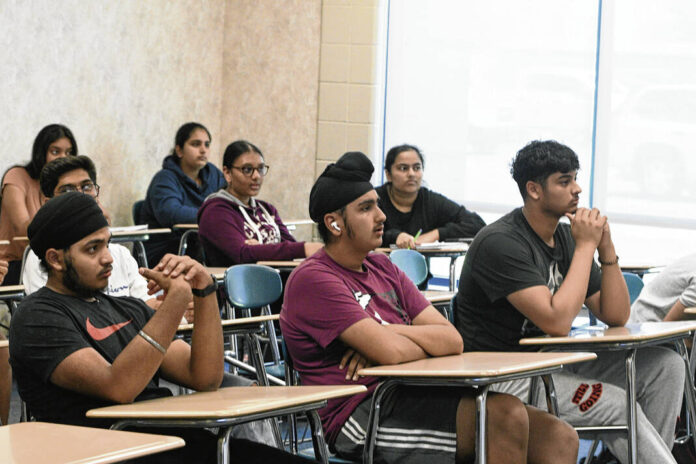At Clark-Pleasant schools, the number of students learning English for the first time has more than doubled in the past three years.
As the English Language Learner, or ELL student population has soared, so has the demand for ELL-certified teachers. Now, a partnership between the Indiana Department of Education and the University of Indianapolis’ Center of Excellence in Leadership of Learning, or CELL, will pay the tuition, books and material fees of educators as they seek ELL licensure, according to an IDOE news release.
The partnership created the Indiana Teachers of English Learners Licensure, or I-TELL initiative. The $2 million statewide initiative uses money from Indiana’s federal Elementary and Secondary School Emergency Relief funds, according to the release.
The partnership was announced in November and some Johnson County school officials are already looking for educators who might benefit from becoming licensed to teach ELL students.
At Clark-Pleasant Community School Corporation, where the nearly 800 ELL students represent more than 10% of total enrollment, the program would help teachers attain certification without the financial burden that used to come with it, said Brian Lovell, who oversees the school district’s ELL program.
Clark-Pleasant has six ELL teachers, compared to four last school year. The district also has six instructional assistants, which Lovell said is up from three or four during the 2019-20 school year, when about 375 students were in ELL programs.
“I wouldn’t say that we’re behind, but we’re just trying to meet that need and trying to provide classroom teachers with strategies and opportunities,” Lovell said.
With more teachers certified to assist ELL classrooms, students who aren’t as familiar with the English language will be able to receive more individualized attention, he said.
“It’s about making the caseload manageable as the population continues to grow, making sure teachers are not spread across so many students that they can’t support them appropriately,” he said.
The partnership formed from a need present across the state, said Carey Dahncke, CELL’s executive director.
The number of Hoosier educators licensed to teach ELL students increased by 38% from 2019 to 2021, and Indiana now has more than 77,500 English learner students, according to the IDOE release.
“IDOE has additional expectations for schools to have properly-licensed teachers teaching those students, but when they’re posting jobs, there are not enough teachers with that license to fill the positions that exist,” Dahncke said. “CELL worked with the DOE in how to help solve that.”
Through the I-TELL initiative, there are now pathways for both teachers who are licensed in another content area and teachers who don’t have a license at all. A dozen Indiana colleges have agreed to host licensure coursework, including three in Marion County: the University of Indianapolis, Butler University and Marian University, according to indianatell.org. On the website, prospective ELL teachers can fill out an I-TELL interest form and view a list of requirements needed to receive tuition support.
“There’s a hefty cost in taking grad courses, meaning there’s not a heavy incentive to take the courses needed to be licensed,” Dahncke said. “We believe we can get in excess of 200 teachers trained and into the marketplace in the next couple of years.”
Greenwood Community School Corporation Superintendent Terry Terhune said he hopes some of his district’s teachers will pursue the program as well.
Terhune learned about the program as one of a group of superintendents who meets with representatives from the CELL program. Terhune is the only Johnson County superintendent who is part of the group, and said the need for licensed ELL teachers grows with the population of students learning English at Greenwood schools. There are 282 ELL students in the school district, about 7% of the student body according to the most recent count, Terhune said.
“Right now, we’re staffed but we also know we’re reevaluating our staffing and looking to see how many teachers we need as our numbers continue to rise,” he said. “We will at some point post a position (for ELL) and then as teachers are interested, if they have a license great, and if not, we have a way to get it for you.”





